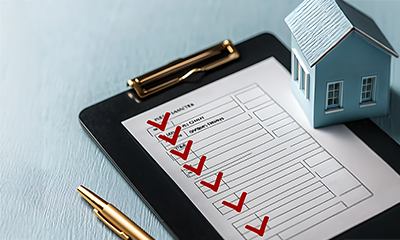Commercial Component Rules in PMAY Subsidized Home Loans

Commercial Component Rules in PMAY Subsidized Home Loans
The Pradhan Mantri Awas Yojana (PMAY) is a scheme that offers interest subsidies on home loans to make housing more affordable for economically weaker sections (EWS), low-income groups (LIG), and middle-income groups (MIG). While the scheme primarily focuses on residential properties, there are specific provisions and restrictions regarding the inclusion of commercial components in PMAY-subsidized home loans. These rules ensure that the scheme remains aligned with its goal of providing affordable housing while addressing the practicalities of mixed-use properties.
Understanding PMAY and Credit Linked Subsidy Scheme (CLSS)
PMAY is divided into two main components: PMAY-Urban (PMAY-U) and PMAY-Gramin (PMAY-G). The Credit Linked Subsidy Scheme (CLSS) under PMAY-U is particularly significant as it provides direct financial relief to homebuyers by reducing their loan burden through interest subsidies.
Key Features of CLSS
Interest Subsidy Rates
● EWS/LIG: 6.5% subsidy on loans up to ₹6 lakh.
● MIG-I: 4% subsidy on loans up to ₹9 lakh.
● MIG-II: 3% subsidy on loans up to ₹12 lakh.
Maximum Subsidy Amount
Upto ₹1.80 lakh
Loan Tenure: The subsidy applies for a maximum loan tenure of 20 years.
Eligibility Criteria
● Applicants must not own a pucca house anywhere in India.
● The property must fall within the carpet area limits specified for each income category:EWS: Up to 30 square meters.
Purpose of Loan: The loan must be used for purchasing, constructing, or renovating a residential property.
Commercial Component Rules in PMAY
While PMAY is primarily designed for residential properties, it recognizes that many housing projects, especially in urban areas, include a commercial component. For example, mixed-use developments often feature small shops or office spaces on the ground floor while the upper floors are designated for residential use. To address this reality, PMAY includes specific rules governing the commercial component of subsidized properties.
Key Rules Regarding Commercial Components
Permissible Commercial Use
● The scheme allows a small portion of the property to be used for commercial purposes, provided it does not exceed a specified percentage of the total property area.
● As per the guidelines, the commercial component should not exceed 30% of the total Floor Area Ratio (FAR) or built-up area.
Zoning Compliance
● The property must comply with local zoning regulations that permit mixed-use developments.
● Properties located in areas designated exclusively for residential use cannot include a commercial component under PMAY.
Loan Utilization Restrictions
● The subsidized loan amount can only be used for the residential portion of the property.
● Any additional financing required for the commercial component must be arranged separately at non-subsidized rates.
Carpet Area Limits
● The carpet area limits specified under PMAY apply only to the residential portion of the property. The commercial component is excluded from these calculations.
Income Eligibility Criteria
● Beneficiaries must meet the income eligibility criteria for their respective categories (EWS, LIG, MIG-I, or MIG-II), regardless of whether their property includes a commercial component.
Documentation Requirements
● Applicants must provide detailed plans and approvals indicating the division between residential and commercial areas within the property.
Implications for Beneficiaries
The inclusion of commercial components in PMAY-subsidized properties offers both opportunities and challenges for beneficiaries.
Opportunities
Additional Income Source
● A small shop or office space within a subsidized property can serve as an additional source of income for beneficiaries, enhancing financial stability.
Convenience
● Mixed-use properties allow beneficiaries to operate businesses close to their homes, reducing commuting time and expenses.
Increased Property Value
● Properties with commercial components often have higher resale value due to their potential for generating rental income.
Challenges
Financing Complexity
● Beneficiaries may need to secure separate financing for the commercial portion of their property, which can complicate loan arrangements.
Compliance Burden
● Adhering to zoning regulations and obtaining necessary approvals for mixed-use properties can be time-consuming and costly.
Limited Subsidy Scope
● The interest subsidy under PMAY applies only to the residential portion of the property, limiting its overall financial benefits for mixed-use developments.
Awareness Gap
● Many beneficiaries are unaware of the rules governing commercial components under PMAY, leading to confusion during loan applications.
Role of Financial Institutions
Financial institutions play a crucial role in ensuring that beneficiaries understand and comply with PMAY’s rules regarding commercial components. Aadhar Housing Finance has been particularly effective in this regard, offering tailored solutions and expert guidance to homebuyers.
How Beneficiaries Can Navigate Commercial Component Rules
To effectively navigate PMAY’s rules regarding commercial components, beneficiaries should take the following steps.
Understand Zoning Regulations
● Verify whether local zoning laws permit mixed-use developments in your area before purchasing or constructing a property with a commercial component.
Consult Financial Experts
● Work with experienced financial institutions like Aadhar Housing Finance to understand how including a commercial component may impact your subsidy eligibility and loan arrangements.
Plan Finances Carefully
● Separate your financing arrangements for residential and commercial portions of your property to ensure compliance with PMAY guidelines.
Stay Informed
● Regularly review updates to PMAY guidelines and local zoning regulations that may affect your eligibility or property usage plans.
Seek Professional Assistance
● Engage architects or legal experts familiar with mixed-use developments to ensure that your property plans meet all regulatory requirements.
Conclusion
The Pradhan Mantri Awas Yojana has significantly enhanced housing affordability in India through its Credit Linked Subsidy Scheme. While primarily focused on residential properties, the scheme’s provisions for limited commercial components reflect its adaptability to urban realities where mixed-use developments are common. However, navigating these rules requires careful planning and compliance with zoning regulations. Financial institutions like Aadhar Housing Finance play an indispensable role in guiding beneficiaries through these complexities, ensuring that they can maximize their benefits under PMAY without compromising on regulatory compliance. By understanding and adhering to these rules, homebuyers can leverage the dual advantages of affordable housing and income-generating opportunities offered by mixed-use properties under PMAY subsidies—making their dream of sustainable homeownership a reality!
- Aadhar Housing Finance has been awarded and recognised as ‘The Best Brand 2021’ at the 4th Edition of ‘The Economic Times – Best Brands 2021’ held at Sahara Star in Mumbai on 21st December, 2021.
- Aadhar Housing Finance was conferred with the 'CSR Times Award 2021' for the successful initiatives implemented under its CSR project, ‘Aayushmaan Aadhar’ at the 8th National CSR E-Summit, on 17th December, 2021.
- Aadhar Housing Finance was conferred with 'India CSR Leadership Award 2021' on 10th Dec, 2021 in 'Community Health' category for its impactful community-centric initiatives conducted under Aayushman Aadhar project.
- Aadhar Housing Finance has received ‘Maharashtra State Best Employer Brand Award, 2021’ at the 16th Employer Branding Awards hosted on 23rd Nov, 2021 by World HRD Congress for our exemplary work in HR. Aadhar has translated and combined vision with action leading to better people strategies and cultivation of competencies in order to enable the organization to be future ready.
- Aadhar Housing Finance Ltd bagged 5 awards across below categories at ‘Banking Frontiers NBFC Awards & Conference 2021’ (DNA Awards 2021) virtual summit held on 20th Aug, 2021. 1) Best Cyber Security Initiative - 1st Prize 2) Best API Initiative - 1st Prize 3) Best Omnichannel CX Initiative - 2nd Prize 4) Best Cloud Initiative - 2nd Prize 5) Esteemed Trophy (IT & Digital Group)
- Awards & Recognition: We received two prestigious awards at the 7th Edition of ‘National Awards For Excellence in BFSI 2021’ which was held virtually on 26th Aug 2021, in mentioned categories: 1) Aadhar Housing Finance Ltd received the ‘Affordable Housing Finance Company of the Year’ award, 2) Shri Deo Shankar Tripathi, MD & CEO, Aadhar Housing Finance Ltd has was conferred with ‘CEO of the Year’ award.
- Awards & Recognition: For the Second consecutive year, Aadhar Housing Finance has been certified as a ‘Great Place To Work’ by Great Place To Work Institute, a Global authority on recognizing high-trust and performance driven culture at workplaces.
- Awards & Recognition: Aadhar Housing Finance is certified as a ‘Great Place To Work’ by Great Place To Work Institute (India). This is a significant milestone for Team Aadhar as ‘The Great Place to Work Model’ is the world’s most researched, accepted and sustainable definition of a great workplace from an employee’s point of view. It is a comprehensive framework encompassing the overall employee experience ecosystem.
- Awards & Recognition: Aadhar Housing Finance won for the 3rd year in a row at The Outlook Money Awards. Team Aadhar received the Silver award in the Affordable Housing category at the Outlook Money Conclave held in Mumbai on 27th Feb, 2020.
- Awards & Recognition: Shri Deo Shankar Tripathi, MD & CEO, Aadhar Housing Finance received the ‘Top Most Influential BFSI Leaders’ award at the World BFSI Congress & Awards, in Mumbai on 14th Feb 2020.
- Awards & Recognition: Shri Deo Shankar Tripathi, MD & CEO, Aadhar Housing Finance received ‘the NBFC Leadership Award 2020’ at the 8th NBFC 100 Tech Summit held in Mumbai by Banking & Finance Post and Elets on 23rd January 2020.
- Awards & Recognition: The Aadhar Annual Report 2018-19 wins all India 3rd Prize in the PRSI National Awards 2019 at the 41st All India Public Relations Conference – Hyderabad
- Awards & Recognition: Aadhar Housing Finance is one of the ‘Best BFSI Brands 2019’: Aadhar Housing Finance received ‘The Economic Times Best BFSI Brands 2019’ award at the India-UAE Strategic Conclave 2019 held in Dubai on 15th October, 2019
- Awards & Recognition: Aadhar Housing Finance received ‘The affordable Home Loan Provider Of The Year 2018’ award from Union Minister Shri Nitin Gadkari at Outlook Money Conclave in Mumbai on 12th March, 2019 for the exemplary work in supporting the ‘Housing for All’ mission in India.
- Aadhar Housing Finance received the Prestigious ‘PMAY Empowering India Award 2019’ from Union Minister Shri Hardeep Singh Puri in Delhi on 5th March, 2019 for its exemplary work in supporting the ‘Housing for All’ mission in India.
- Dun & Bradstreet included Aadhar Housing Finance in 'India's Leading BFSI Companies 2019' list. The report was published by Dun & Bradstreet Information Services in March, 2019.
- Aadhar is declared one of the 1) ‘DREAM COMPANIES TO WORK FOR’ (Financial Services) and 2) ‘DREAM EMPLOYER OF THE YEAR’ presented by ET Now on 16th Feb, 2019 at the World HRD Congress in Mumbai.
- Shri Deo Shankar Tripathi, MD & CEO, Aadhar Housing Finance was recognized and felicitated as one of ‘100 Top Most Influential BFSI Leaders’ at the ‘World BFSI Congress’ held in Mumbai on 14th Feb, 2019.
- Aadhar Housing Finance bagged the ‘Most Promising Brand For Housing Finance’ award at the ‘World BFSI Congress’ presented by ET Now in Mumbai on 14th Feb, 2019.
- Aadhar Housing Finance won ‘Prestigious Brands of India 2019’ award at the conference held at Sahara Hotel in Mumbai on 12th Feb, 2019. The list of prestigious brands was judged and presented by BARC (Brand Advertising Research and Consulting), a global brand consultancy firm and ERTC Media, one of India’s leading independent media consulting & brand listing organisations. The recognition solidifies Aadhar as a leader within housing finance segment across various parameters such as brand recall, impact, trust, positioning, growth, reach, and innovation.
- Aadhar Housing Finance won the prestigious Finnoviti 2019 award at ‘Finnoviti Awards & Conference’ presented by Banking Frontiers and their Knowledge Partner Deloitte in Mumbai on 25th January, 2019 for innovative distribution and referral model named ‘Aadhar Mitra’.
- Aadhar Housing Finance bagged 2 prestigious awards at the ‘Banking, Financial Services & Insurance Awards’ presented by ABP News in Mumbai on 28th November, 2018:
- Housing Finance Company of the Year (Medium and Small) – for our exemplary work in the affordable housing finance segment.
- Marketing Campaign of the Year – for our recent brand campaign #GharBanegaTohDeshBanega.
- Aadhar MD & CEO awarded the ‘BFSI Leadership Award’ in Nov 2018 by ‘The Banking and Finance’ magazine and ‘elets’.
- Aadhar MD & CEO awarded the ‘Certificate of Excellence’ under “30 most innovative Business Leaders to watch in 2018” in July 2018 by ‘The CEO Magazine’.
- Aadhar receives the Award as the “Best Affordable Home Loan Provider of the Year 2017” at the ‘Outlook Money Awards’ March 2018.
- Aadhar CEO receives the ‘Inclusive Business Leaders Award’ from International Finance Corporation (IFC) for Aadhar’s exemplary work in Inclusive Business at the 2012 Inclusive Business Leaders Forum in Tokyo, Japan.
Report











